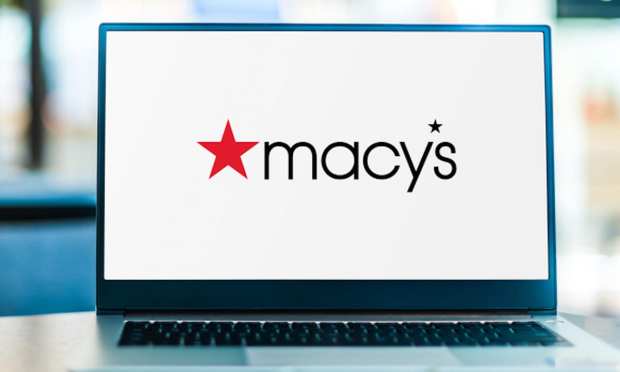From BOPIS To Livestreams, Department Stores Go All-In On Digital

In the past four weeks alone, the traditional retailing space has not just been sipping the “Kool-Aid” that is modern online merchandising — it has been chugging it.
During that brief span, we’ve seen one unprecedented digital event after another bursting from the retail sector, be it the launch of the livestreamed Nordstrom shopping channel, the spin-off of Saks.com as a standalone digital entity, the uptake of TikTok as Walmart’s favorite new selling platform, or Macy’s rejection of its department store roots in favor of the cooler “digitally-led omnichannel retailer” moniker.
After taking years of market share abuse at the hands of their eCommerce brethren, it’s clear that the surviving brick-and-mortar retail players are starting to put up a real fight — and some real results. Their embrace of online selling is no longer seen as some sort of second-rate side hustle, but rather the fast-growing driver that is generating the bulk of their business.
In the case of Nordstrom, whose fourth-quarter profits fell 80 percent and whose total sales declined 20 percent, its foray into streaming commerce makes sense, given that the Seattle-based luxury retailer already does the majority of its sales online (54 percent as of Q4 2020), and has pledged to “increase the velocity of its digital business.”
“We’re focused on more effectively translating the heritage of service that defines us in this digitally connected world,” CEO Erik Nordstrom told investors on March 3. “This means delivering personalization at scale by creating greater linkages between digital and physical experiences.”
The Art of Bridging the Physical-Digital Divide
As much as Nordstrom and other major national retailers are already actively selling online and also have a significant social media presence, those venues cannot compete with the interactive intimacy and fun that a well-produced livestreamed show can deliver.
It’s one thing to click, browse and read about products online and promos on your phone or laptop, but to be invited to a curated event that matches your buying habits — and that enables you to see live product demonstrations in an inclusive, party-like environment along with friends, giveaways, countdown clocks and more — the process begins to feel more like a “happy hour” than a hard sell.
“This event looks and feels a little bit different because it’s our first-ever live shoppable beauty event, so that means you can literally click on any of the products you see on the screen and add them to your bag immediately — it’s so easy,” said Kevin Sifflet, Nordstrom regional beauty director turned show host, at the outset of the company’s new livestream.
But it doesn’t end there: Sifflet then pivots into the hour’s first special deal, explaining that regular Nordstrom customers can expect to hear from one of the retailer’s experts or stylists after the show is over. “They know your skin best, so they’re going to be following up with you with a text, phone call or style board and get you all taken care of,” he said.
The New Frontier
While Nordstrom, for now, is producing its own shows in collaboration with outside vendors and industry experts, Walmart chose to hire outsiders and leverage the popularity of celebrity influencers who can attract millions of fans and followers — and new customers — who might otherwise might never visit its digital storefront.
Of course, in both cases, the same instantaneous “see it, buy it” technology is available, and hosts are also able to take incoming comments, calls, texts or just emojis.
“We’re going to give TikTok users more of what they want,” Walmart U.S. CMO William White said in a recent company blog post touting this upcoming event — as well as the promise of further ones down the road, unabashedly noting that the first one netted seven times more views than anticipated and grew Walmart’s TikTok follower base by 25 percent.
“Once again, we will give the TikTok community the chance to shop live for items featured in creator content directly in the app, without having to leave the platform,” White said.
There are also third-party platforms, like Verishop’s recently launched Shop Party or TalkShopLive’s Digital Main Street, which can coordinate the rendezvous for retailers. “We are a network that is also cutting the friction in the path to purchase,” said TalkShopLive CEO Bryan Moore, adding that a lot of livestream commerce drives people to go download another app when it’s time to buy. “So if you’re a brand, if you’re a retailer, if you’re talent or if you’re a small business, you don’t necessarily want to drive everybody to go download another app in order to experience your product and possibly buy it,” he noted.
Instead of sitting alone in the dark, users can “hang out over video chat, explore products and shoppable content, and see what others are browsing and shop together,” Verishop said of its new streaming feature.
Trial And Airing
As much as Walmart seems to prefer the trendy new short video platform, Saks Fifth Avenue has so far not taken up TikTok, but is actively working to keep two Instagram accounts, a Facebook page, a Twitter presence and a Pinterest profile fresh and up to date, in addition to its own website.
In an unprecedented move in early March, the parent company of Saks Fifth Avenue announced that it was splitting its eCommerce unit from its 40 traditional retail stores into “separate but related sister companies.” With the backing of a $500 million investment and the digital expertise of Insight Partners, Saks’ parent company, Hudson’s Bay (HBC), said the two brands would be better able to plan and execute within their respective service models.
“With this move, we are redefining the luxury shopping ecosystem,” HBC CEO Richard Baker said in a statement. “Luxury eCommerce is poised for exponential growth, and as a standalone digital company with an existing strong position in luxury, Saks is primed to win significant market share,” he added, noting that SFA’s 100-year-old brand status and legacy of reinventing itself and unlocking value within its stable of assets.
The pandemic has clearly accelerated that pace of transformation and forced retailers to double down on ways to connect with shoppers who were not coming to stores, which most often means investing in — and trying out — new ways to connect with customers.
That was the case last month, when Dallas-based department store chain Neiman Marcus announced plans to spend $85 million on “talent, merchandising, technology and supply chain that will reshape the Neiman Marcus and Bergdorf Goodman customer experience.”
Growing but Slowing
It’s easier to grow a new business from a low base than it is to keep increasing the growth rate of a business, especially as it gets larger. This is already being seen in the sequential slowdown in digital sales emerging at several key retail chains.
This law of large numbers will continue to be a factor, especially as the post-COVID comparisons that reflect 2020’s digital surge start to get tougher later this year.

While the pace of eCommerce growth topped overall topline growth at all the major retailers that break down these numbers, the quarter-on-quarter slackening trend was clear in the Q4 results, which showed across-the-board dips from the growth rates posted in Q3.
The big, broadline retailers are clearly much further along in their digital transformations and integration, as even Target and Walmart experienced slowing digital growth rates. Not that anyone was disappointed by Target’s Q4 digital increase of 118 percent, but it was 35 full percentage points lower than its Q3 result. At the same time, Walmart saw its Q4 digital sales growth in the U.S. slow to 69 percent from 79 percent in Q3.
But compared to the respective 21 percent and 7 percent top-line growth rates delivered in Q4, it’s clear that the legacy brick-and-mortar chains are fully on-board with the click-and-mortar conversion.
